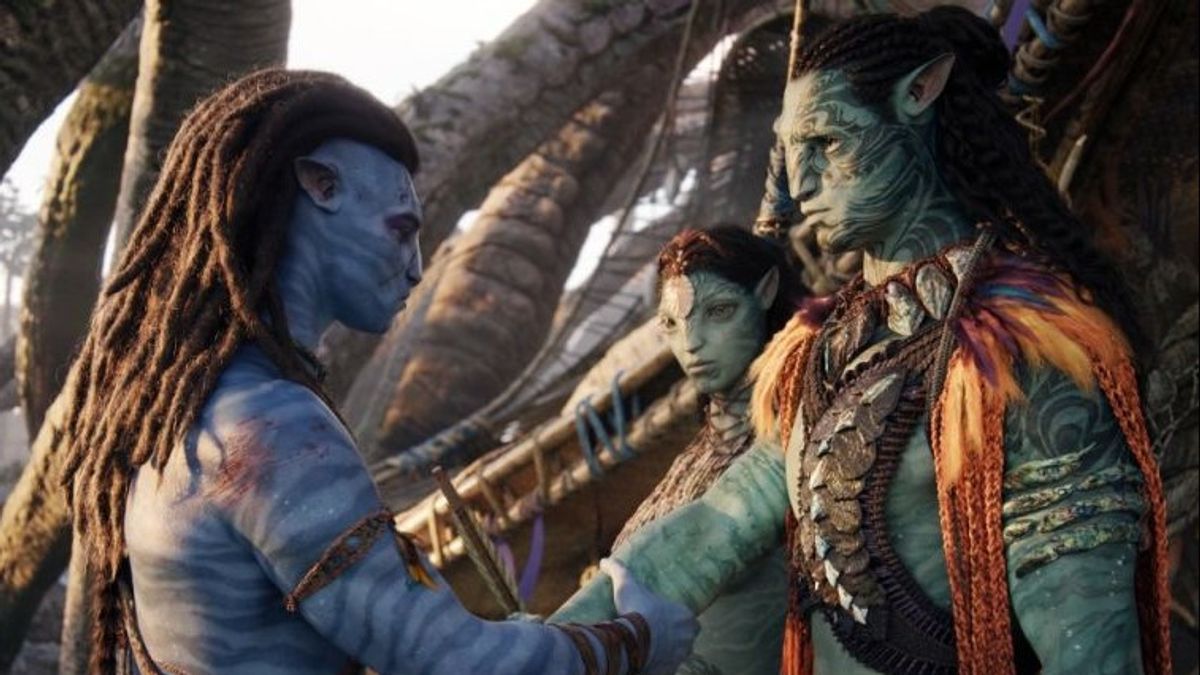JAKARTA - Avatar: The Way of Water premieres in Indonesian cinemas starting December 14, 2022. Too difficult to describe Avatar: The Way of Water in just a few words. After 13 years since its first film was released, Avatar (2009), Director James Cameron has proven to have dedicated his love of cinema in his latest film -- with stunning visual achievements, careful directing, and epic cinematic experiences.
Set a decade after the first film, Avatar: The Way of Water tells the story of the family? Jake (played by Sam Worthington), Neytiri (played by Zoe Saldana), and their children Neteyam (played by Jamie Flatters), Lo'ak (played by Britain Dalton), Kiri (played by Sigourney total), and Tuk (played by Trinitybaniss).
Departing from these family leaders, the audience is invited to see the problems that follow them, to what extent they try to keep each other safe, the battle they are fighting for to stay alive, and the tragedy they are experiencing.
They have to fight against the Langitans -- corrupt military criminals who are now struggling to colonize Pandora so that the inhabitants of Earth can have a future. The gang is still led by Miles Quaritch (played by Stephen Lang) who changed his form as an Avatar to make his mission easier.
Quoted from ANTARA, Jake and his family then went to self-isolate to an archipelago far from the forest. They formed an alliance with the Metkayina clan, which lived in harmony with their territorial waters. One of these clans is led by Ronal (played by Kate Winslet).
What's interesting about Avatar: The Way of Water from the side of the story is how simple the premises are carried out. However, that simplicity is what makes this film interesting to many people, because it feels so close and easy to understand -- regardless of its majestic universe and so diverse characters.
"Families are our fort." More or less it is the main focus of this 3-hour 12-minute film. The family said it not only refers to the family of my mother, but also the place they live in and the people in it.
Cameron - who is known as one of the vocal environmental activists, of course will not waste this film's media. When the first film was about protecting the forest, the sequel was more about protecting our oceans.
Again, it's a simple story, but it's told in a very big way. But that's the point, isn't it? "The Way of Water" is sewn up with a series of sequences and scenes that pamper the eyes -- as if to make the audience get carried away by the beauty of Pandora, to dive into the beauty of the ocean led by the Metkayina clan.
This 350 million-dollar sequencing -- just like its predecessor -- became a new benchmark of how artists behind the scenes could go beyond their limits to bring cinema to its next level. From start to finish, "The Way of Water" is an endless festival and tense ride to explore.
The world of Avatar, which is expanded with various biologicals, attracts anyone to enter it. Just like the ikran and lonopteryx that flew dived through the glowing sky of Pandora in the first film, the sequel brings wonders to giant creatures and coral plants at the depths of the sea with enchanting details.
As is well known, the first Avatar changed the way we watch a film. Since its release on the big screen, all films have participated in adopting 3D technology - an extraordinary achievement in film. 3D glasses seem to be one of the inseparable things of that era.
And it happened again 13 years later. Shortly after the audience wore the glasses, in an instant, it was a new world, but also a familiar one. From the first second, the audience seemed to have known that the film they were watching at that time was one of the experiences that would not be forgotten throughout the year.
Cameron's collaboration with cinematographer Russel Chamber is a good combination to bring Avatar's world back to life. The film uses High Dynamic Range technology at 48f/s that takes advantage of refined 3D immersive quality to provide image depth.
With its very impressive technical aspects, it's not too much for Avatar: The Way of Water to be watched on the widest screen in theaters. On the other hand, the first half of the film seems to still not be able to invite the audience to get emotionally involved, as the director still uses this duration to introduce new and old backgrounds, and conflicts that accompany it.
Talking about a lot of characters, doesn't seem like a big deal, considering Cameron really took his time to introduce us to new characters and also remind us of previous characters.
Just like the director, the cast also played their roles stunningly. They all received the right attention. The development of each character was carried out very well, and still had a layer to reveal later.
Long duration becomes one of the topics that makes prospective audiences hesitant to watch this film. However, somehow the director's decision to let the film run with a duration of 192 minutes was the right decision.
It seems that a long broadcast time is needed so that the story can develop into an experience. The audience can see that the director really makes a story with heart and sincerity.
With all its technical and emotional aspects combined, it makes time pass so fast, it even feels like it's not enough and not enough.
Overall, Avatar: The Way of Water is a work that has succeeded in marrying the technology, imagination, narrative, and epic collaboration of each individual in it. However, in the end, Cameron's sincerity in the fantasy world he created made this film even more memorable.
The English, Chinese, Japanese, Arabic, and French versions are automatically generated by the AI. So there may still be inaccuracies in translating, please always see Indonesian as our main language. (system supported by DigitalSiber.id)













